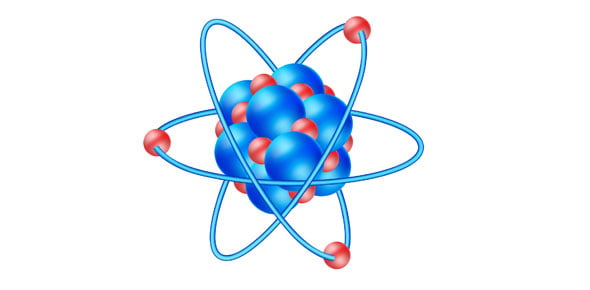1. [atomic Structure] Practice - Honors

Questions and Answers
- 1.
(a) Which of the following particles is the smallest?
- A.
Protons
- B.
Electrons
- C.
Neutrons
- D.
All of the above are the same size.
Correct Answer
B. ElectronsExplanation
It takes 2000 electrons to add up to the mass of a single proton or neutron.Rate this question:
-
- 2.
(b) How many protons, electrons, and neutrons are in an average, neutrally-charged atom of Hydrogen?
- A.
1 proton, 1 electron, 1 neutron
- B.
1 proton, 0 electrons, 1 neutron
- C.
1 proton, 1 electron, 0 neutrons
- D.
1 proton, 2 electrons, 1 neutron
Correct Answer
C. 1 proton, 1 electron, 0 neutronsExplanation
Hydrogen's atomic number is 1, so it has 1 proton. If the atom is neutrally charged, the number of protons will equal the number of electrons, so there is also 1 electron.
The average atomic mass of Hydrogen is 1 amu, so there is only 1 particle in its nucleus (on average). Because we already know that it has 1 proton, there must be 0 neutrons.Rate this question:
-
- 3.
(c) Which of the following elements has chemical and physical properties that are most similar to Magnesium?
- A.
Calcium
- B.
Sodium
- C.
Aluminum
- D.
Both Sodium and Aluminum
Correct Answer
A. CalciumExplanation
The periodic table is organized so that the elements in the same column (family) have similar properties. Because Calcium and Magnesium are both in column 2, they are both alkaline earth metals and therefore have similar properties.Rate this question:
-
- 4.
(d) To which of the following families does Iodine belong?
- A.
Metalloids
- B.
Transition Metals
- C.
Noble Gases
- D.
Halogens
Correct Answer
D. HalogensExplanation
Column 17 (sometimes referred to as column VII A) is a special class of nonmetals known as halogens.Rate this question:
-
- 5.
(e) How many neutrons are in an atom of C-14?
- A.
6
- B.
12
- C.
8
- D.
14
Correct Answer
C. 8Explanation
Isotopes are different forms of the same element that have a different number of neutrons. Because the number of neutrons changes from isotope to isotope, the mass of the isotope must be provided. In the case of C-14, the atomic mass of the isotope is 14, indicating that there are 14 particles in the nucleus. Carbon has an atomic number of 6, so there are 6 protons in the nucleus. 14-6=8 neutronsRate this question:
-
- 6.
(f) Which of the following shows the correct calculation for determining the average atomic mass of copper based on the relative abundance data below?Cu-63 (69%) Cu-65 (31%)
- A.
(63+65) / 2
- B.
(65-63) / 2
- C.
(65 / 2) + (63 / 2)
- D.
(63 x 0.69) + (65 x 0.31)
Correct Answer
D. (63 x 0.69) + (65 x 0.31)Explanation
The average atomic mass of elements on the periodic table are a weighted average - that is, they are the average of all the different isotopes of an element adjusted for how abundant each isotope is. The average atomic mass is determined by the sum of all of the isotope masses multiplied by their respective abundance percentages.Rate this question:
-
Quiz Review Timeline +
Our quizzes are rigorously reviewed, monitored and continuously updated by our expert board to maintain accuracy, relevance, and timeliness.
-
Current Version
-
Mar 21, 2023Quiz Edited by
ProProfs Editorial Team -
Aug 28, 2014Quiz Created by
David Schouweiler


